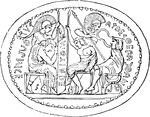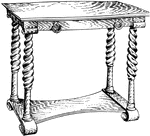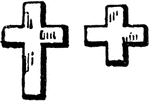
Rectangular Banner
Rectangular banner, made of small ornate decorations and larger floral cornerpieces.
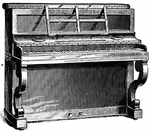
Upright Piano
A piano having the strings mounted vertically in a rectangular case with the keyboard at a right angle…

Osirid Pier
In several Egyptian temples there are square or rectangular piers fronted with colossal sculptured figures…
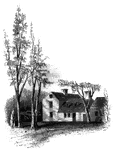
Clark's House
"Clark's House, Lexington. This building was standing when I visited Lexington in 1848. It was built…

Lake Dwellings
"The earliest account of lake dwellings is to be found in Herodotus, who describes a Thracian tribe…

Cippus
"A low column, sometimes round, but more frequently rectangular. Cippi were used for various purposes;…

Fastigium
"An ancient Greek or Roman temple, of rectangular construction, is terminated at its upper extremity…
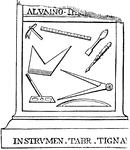
Norma
"A square used by carpenters, masons, and other artificers to make their work rectangular. It was made…

Pallium
"An outer garment. The English cloak, though commonly adopted as the translation of these terms, conveys…

Palium
"The English cloak, though commonly adopted as the translation of these terms, conveys no accurate conception…
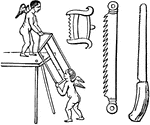
Serra
"Serra, a saw. It was made of iron. The form of the larger saw used for cutting timber is seen in the…

First order prism
"The prism of the first order consists of four rectangular vertical faces, each of which intersects…

Second order prism
"The prism of the second order consists of four rectangular vertical faces, each of which intersects…

Ditetragonal prism
"The dietetragonal prism is a form consisting of eight rectangular vertical faces, each of which intersects…
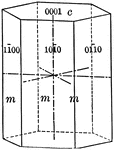
Prism of the first order
"This is a form consisting of six rectangular vertical faces each of which intersects two of the horizontal…
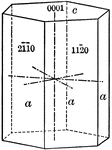
Prism of the second order
"This is a form consisting of six rectangular vertical faces, each of which intersects two of the horizontal…
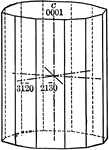
Dihexagonal prism
"The dihexagonal prism has twelve rectangular vertical faces, each of which intersects all three of…

Marcasite
"Orthorhombic. Crystals commonly tabular parallel to basal plane, showing also short prisms and low…
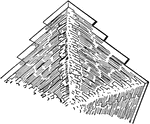
Marcasite
"Orthorhombic. Crystals commonly tabular parallel to basal plane, showing also short prisms and low…
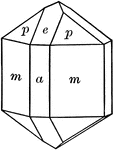
Cassiterite
"Tetragonal. Common forms are prisms and pyramids of first and second orders." — Ford, 1912
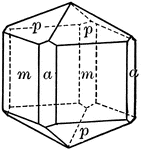
Wernerite
"Tetragonal; tripyramidal. Crystals usually prismatic. Prominent forms are prisms of the first and second…

Wernerite
"Tetragonal; tripyramidal. Crystals usually prismatic. Prominent forms are prisms of the first and second…
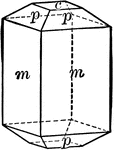
Vesuvianite
"Tetragonal. Prismatic in habit. Often vertically striated. Common forms are prisms of first and second…
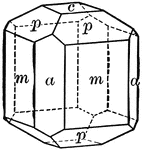
Vesuvianite
"Tetragonal. Prismatic in habit. Often vertically striated. Common forms are prisms of first and second…
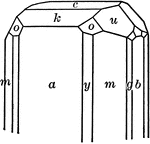
Columbite
"Orthohombic. Habit of crystals is short prismatic; often in square prisms because of prominent development…

Barite
"Orthohombic. Crystals usually tabular parallel to base; often diamond shaped because of the presence…
Barite
"Orthohombic. Crystals usually tabular parallel to base; often diamond shaped because of the presence…

Printing Press
A mechanical device for printing multiple copies of a text on rectangular sheets of paper. It was invented…
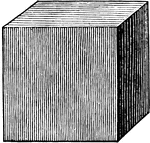
Cube
A regular body with six square faces; a rectangular parallelopiped, having all its edges equal.
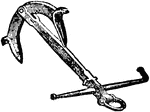
Trotman's Anchor
"The stock is of iron, similar to the Admiralty anchor; the shank is of rectangular section, somewhat…

Martin's Anchor
"The anchor is represented in the position in which it lies on the ground just before taking hold. The…

Flat Rope Pulley
A pulley with a sheave having its perimeter a rectangular or nearly rectangular groove. Used for transmitting…
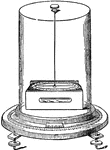
Astatic Multiplier
"The coil is of flat, rectangular shape, with a narrow central opening just large enough to allow one…
Sluice
"One of the simplest forms of sluice as used in river diggings in the north-west of America. A rectangular…

Ladds's Boiler
"A horizontal tubular, which is found to be extremely powerful as well as economical. It is a rectangular…
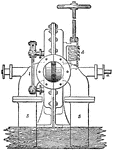
Reaction Turbine
"Professor James Thomson's inward flow or vortex turbine has been selected as the type of reaction turbines.…
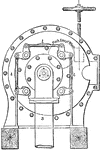
Reaction Turbine
"Professor James Thomson's inward flow or vortex turbine has been selected as the type of reaction turbines.…
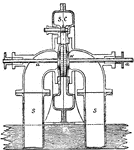
Reaction Turbine
"Professor James Thomson's inward flow or vortex turbine has been selected as the type of reaction turbines.…
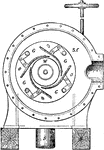
Reaction Turbine
"Professor James Thomson's inward flow or vortex turbine has been selected as the type of reaction turbines.…
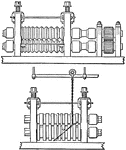
Two-high Trains
"Two kinds of successions of grooves used for rectangular bars in "two-high" train." — The Encyclopedia…

Currying Knife
"The knife is a double-edged rectangular blade, about 12 inches by 5 inches, with a straight handle…

Reflecting Prism
"Fresnel next conceived the admirable improvement of employing the principle of "total" or internal…

Stevensons Revolving Light
"In 1835 Mr. Stevenson, in a report to the Northern Lighthouse Board, proposed to add fixed reflecting…
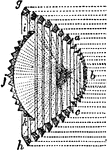
Dioptric Holophote
"Perfect Form of Dioptric Holophote for an Oil Flame.—By combining the back prisms ga, hc just described…

Swans Designs
"Professor Swan's Designs.—Among several ingenious arrangements and new forms of agents proposed by…
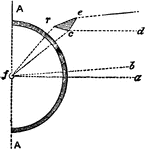
Straight Prisms
"Condensing Straight Prisms.—These, either by reflexion or refraction or both, cause a ray fr…
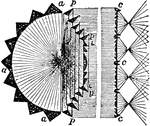
Condensing Light
"Fixed Conensing Light for a Single Sector, 1850.—The holophote Light pLp throws its whole light on…

Condensing Quadrant
"Condensing Quadrant.—The fixed apparatus bbb, with spherical mirror behind, throws its rays directly…
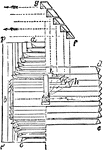
Condensing Octant
"Condensing Octant.—The central fixed apparatus bb with spherical mirror dd throws its rays directly…
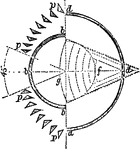
Condensing Octant
"Condensing Octant.—The central fixed apparatus bb with spherical mirror dd throws its rays directly…
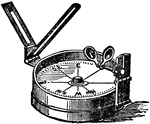
Azimuth Compass
"At sea the declination is generally observed by means of an azimuth compass invented by Kater. It consists…
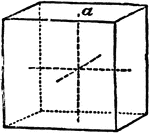
Primitive Crystal
"In this the four lateral planes are rectangular and equal; they may be either oblong or square; in…
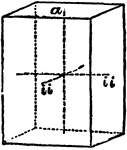
Primitive Crystal
"If the base is a square and the prism stands erect—that is, if its sides or lateral planes, as…
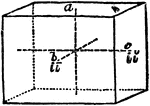
Primitive Crystal
"When the base is a rectangle instead of a square, the form is a right rectangular prism." —The…
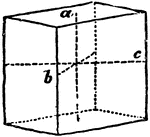
Primitive Crystal
"When the base is a rhombus, and the prism stands erect, the form is a right rhombic prism." —The…

